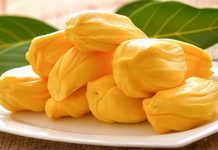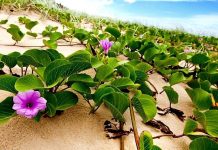Family: Sapotaceae
Synonym: Achras zapota L.
Bengali/Vernacular name: Sofeda.
Tribal name: Sagra-chae (Chak), Nazak (Lushai), Rowapa (Marma), Fagati-sthei (Rakhaing).
English name: Sapodilla plum, Sapota, Naseberry.
Description of the Plant: A small evergreen tree with milky latex. Leaves simple, alternate, petiolate, crowded at the end of branchlets, ovate-elliptic to elliptic-lanceolate, entire margin, base broad, apex obtuse. Flowers in leaf axil, pedicellate, bisexual, white. Fruit a fleshy berry, usually globose, 5-10 cm in diameter, rusty-brown; seeds 5-12, shining black, 2 cm long.
Plant parts Used: Leaf, bark, flower, fruit, seed, and root.
Traditional
Uses: A paste made with the leaves is applied to the cutting wound once
a day for two days to treat bleeding from cutting wound.
Seed kernel oil used as skin ointment and as dressing for falling hair.
Fruit soaked in melted butter overnight, is thought to be preventive for
biliousness and fever.
Decoction of the bark used is for diarrhea and fever treatment.
The fruit is eaten as a remedy for indigestion, and diarrhea.
Seed infusion used as eyewash.
The pulverized roots are used to treat thrush in babies.
Flowers of the plant are one of the ingredients in a powder rubbed on the
woman’s body after childbirth.
Decoction made from leaves of the plant is used for the treatment of gastric
ulcer, and fever.
Distribution: This species is planted all over the country.
Is this plant misidentified? If yes, please tell us….















… [Trackback]
[…] Find More to that Topic: natureinfo.com.bd/manilkara-zapota-l-p-royen/ […]